Since I didn't want to attach any weight-bearing hardware to the spars or mast (I did use 2 pad-eyes to prevent lazy jacks from sliding up or down the boom), I had to fabricate all the 'software' from rope.
There was quite a bit of trial-and-error fitting required, and a whole lot of whipping, seizing, and other small work to be done (no butane whipping on the Blue Moon!), so this took time.
Not to mention it's been raining cats and dogs for the last two weeks...
Anyway, it's finally done, and I had a picture perfect day to go out and take photos of all the various pieces. I'll tackle them one by one.
Standing Rigging
The Blue Moon came with a pair of stainless steel wire shrouds.
At the top, each shroud has a soft eye that hooks over the top of the mast, and bears on the mast 'shoulders'. (Anyone know the real word for these?)
 |
| Soft eyes of shrouds |
The shrouds are positioned slightly in front of the mast, so provide some support from in front. Obviously, there is no room for a headstay.
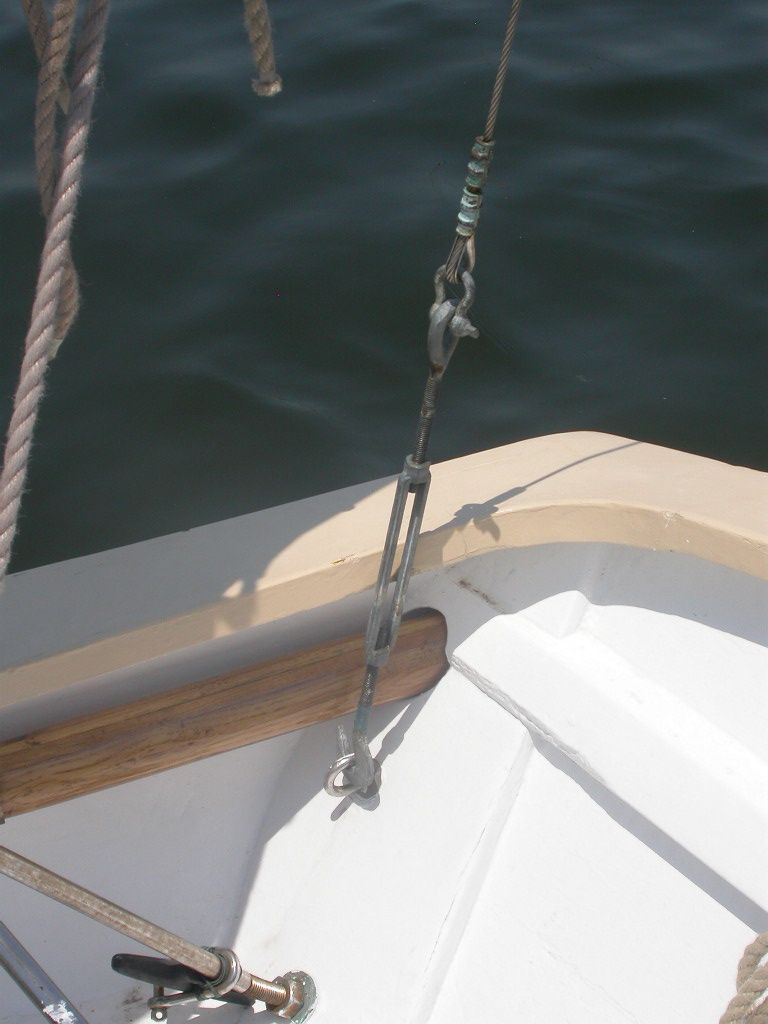 |
| Shroud shackled to pad-eye bolted through transom. |
You might wonder how the mizzen stays up without a backstay. I know I did. A couple of reasons:
- The main purpose of a backstay is to counteract the powerful force exerted on a mast by a headsail. Some boats fly a headsail from the mizzen (called a mizzen staysail), but there's no room on the Blue Moon for one (5 sails is enough, anyway.)
- When the mizzen sail is up, the top of the mast is 'stayed' by the virtual backstay consisting of the halyard, sail, sheet, and boomkin stay.
Halyard
One of the big mysteries of the Blue Moon was how the heck you were supposed hoist the mizzen, with no block at the top of the mast. The answer I came up with was to hang the block from a kind of grommet that hooked over the top of the mast, with the soft eyes of the shrouds.
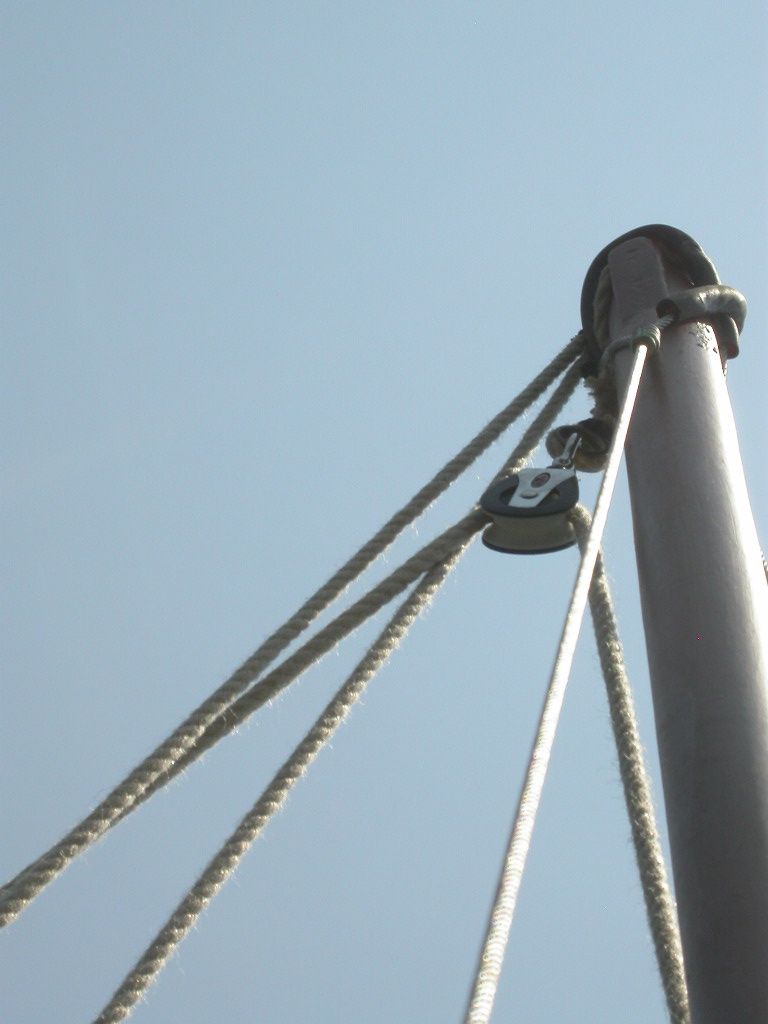 |
| Halyard block hung from top of mast with grommet |
However, the lazy jacks (see below) complicated the matter a bit. To make sure the block or halyard didn't get tangled up with them, I needed to make sure the block hung below and between the lazy jack 'legs'. Other than that detail, installation was straight forward.
 |
| Halyard block |
Parrel Line
An important component of a lug sail, a parrel line keeps the yard snug against the mast. There are many ways to do this, depending on the configuration of the sail. A long parrel line gives the yard a little fore and aft freedom, so that it can find it's on position on the mast.
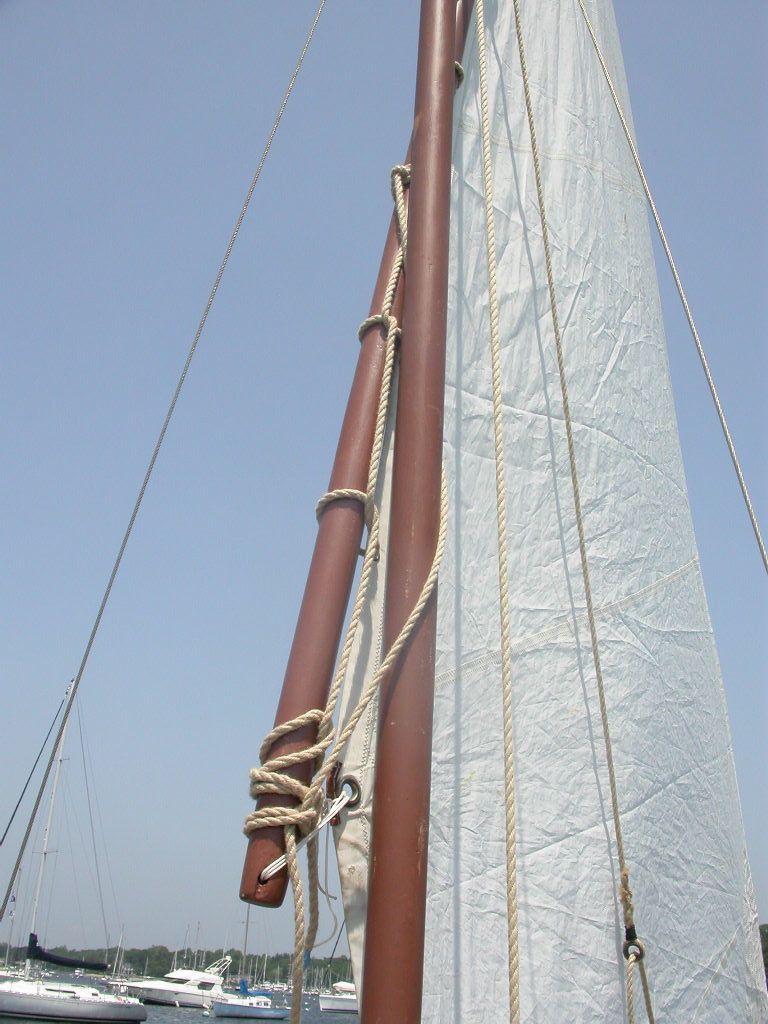 |
| Parrel line holds yard to mast |
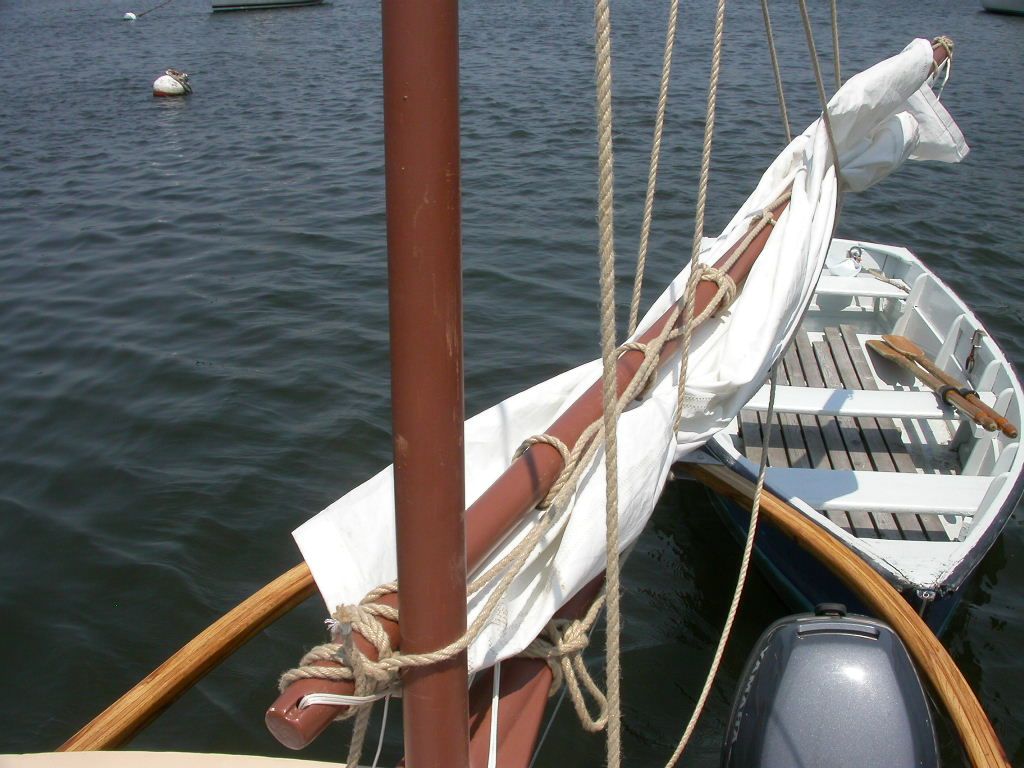 |
| With sail down |
Lazy Jacks
Lazy Jacks were key to building a no-drama mizzen -- one that I could hoist up or haul down quickly and easily, without having a tangle of spars, rope, and sail dragging in my wake.
They are fairly simple, just a single line that runs from the boom, up through an 'eye' on one of the legs, down and under the boom, and then back the same way.
One end is tied to the boom, the other runs through the in-board pad eye so I can adjust the length of the legs. I'm not sure this 'adjustability' is really necessary, so may trim it off at some point, but at the moment, it's still adjustable.
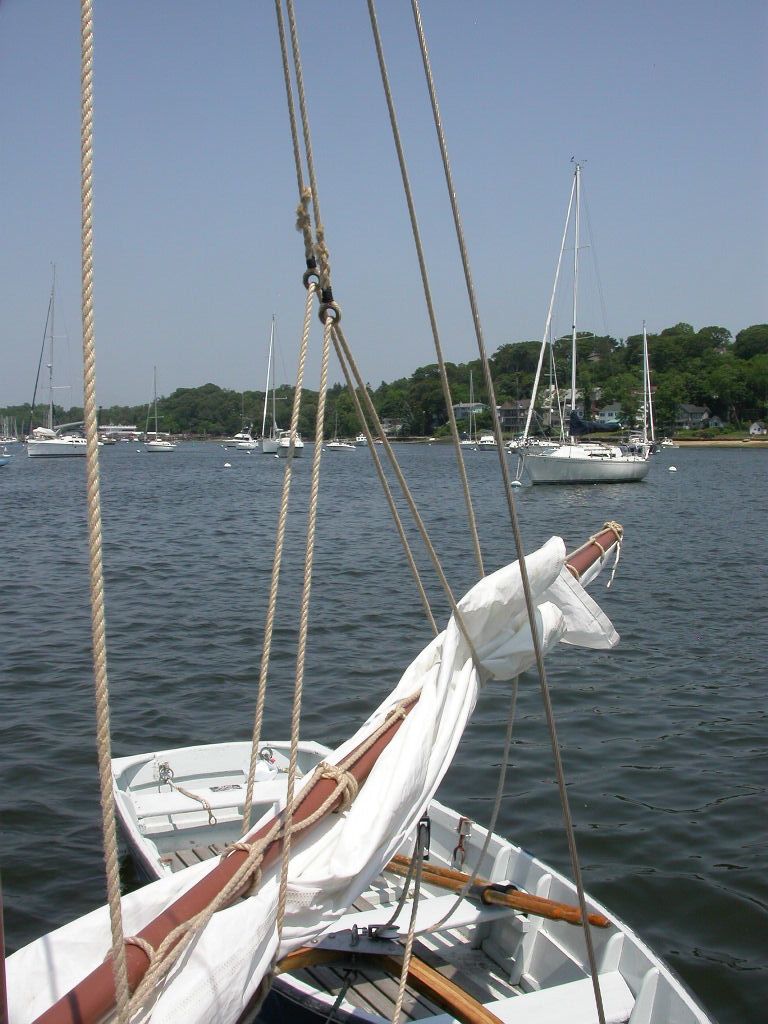 |
| Simple lazy jacks do the trick |
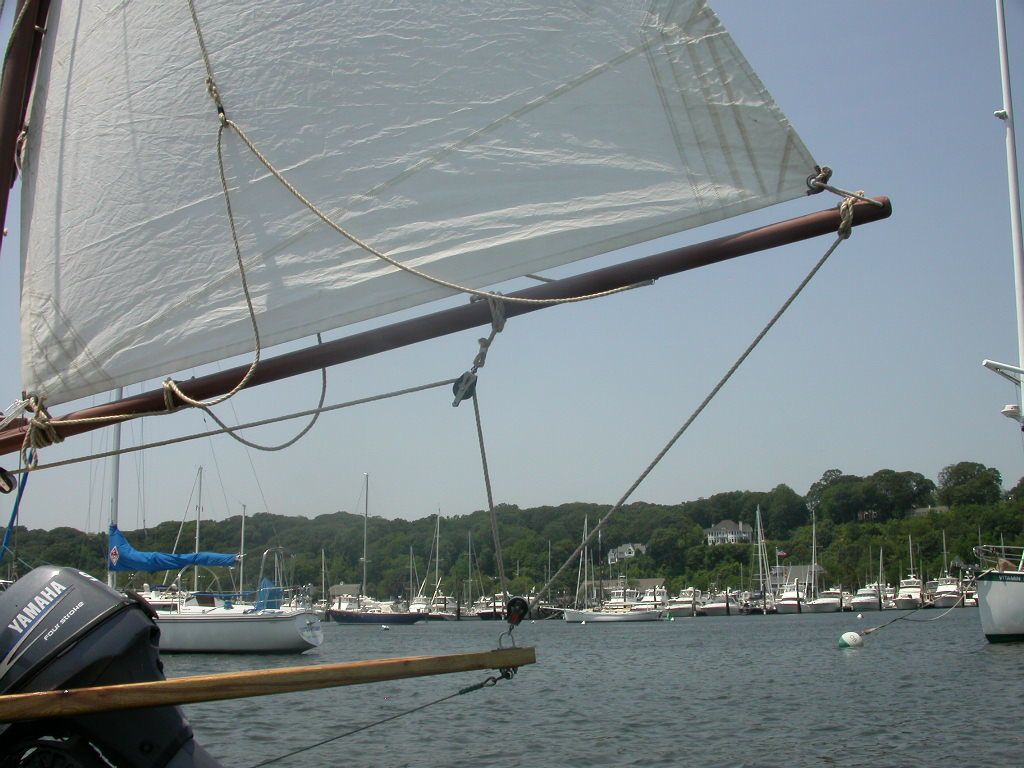 |
| Plenty of slack in Jacks when sail is up to avoid chafing |
Unexpected bonus: with the sail, spars, etc, lowered into the lazy jacks, I can untie the parrel line closing the gaff jaws, and the parrel line holding the yard to the mast. Then the whole bundle is supported only by the lazy jacks. I can push it back, clearing the jaws from the mast, and then swing the bundle back into the cockpit.
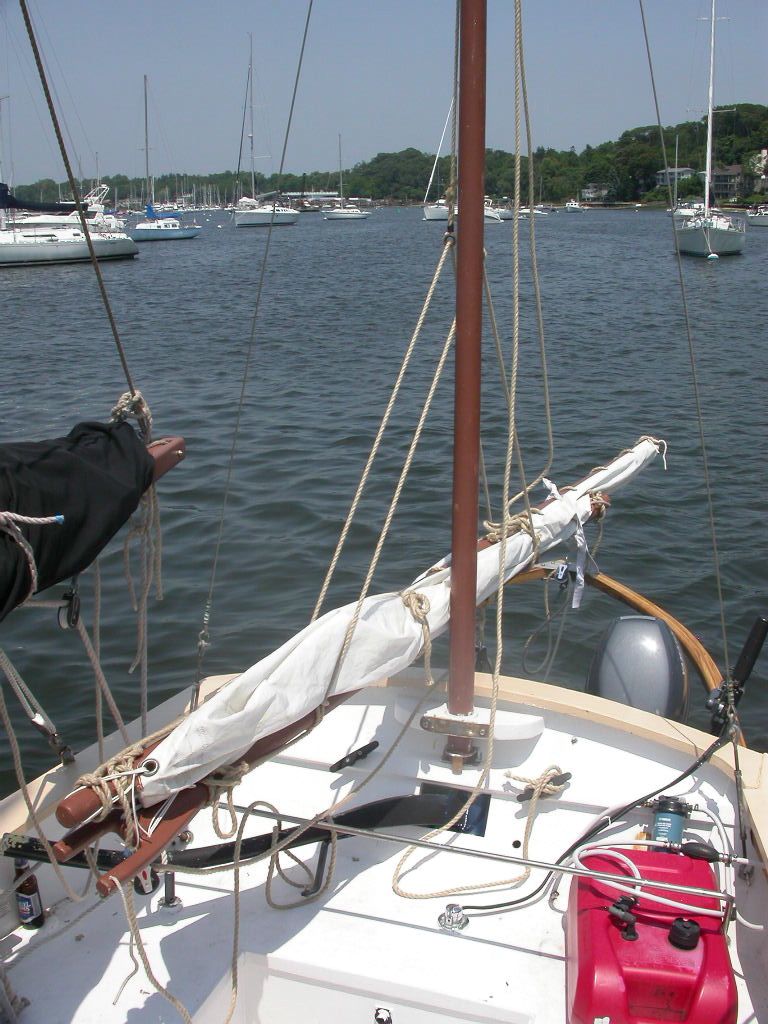 |
| Swinging mizzen into cockpit to put on sail ties and cover |
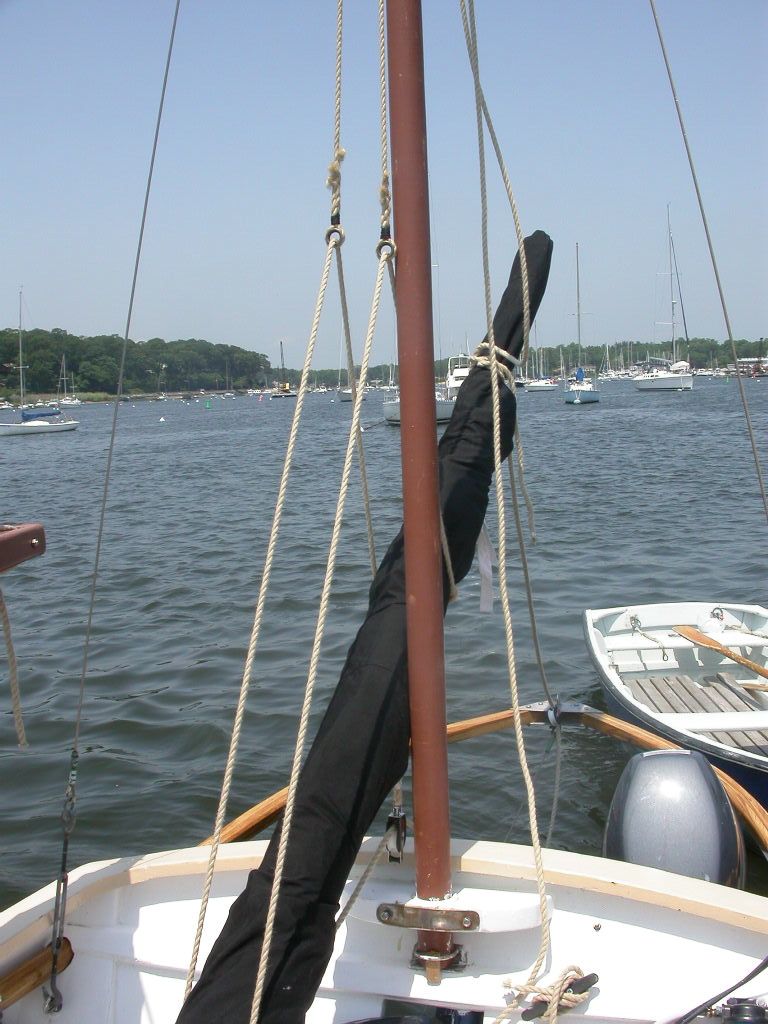 |
| Cover on, with halyard tied around end |
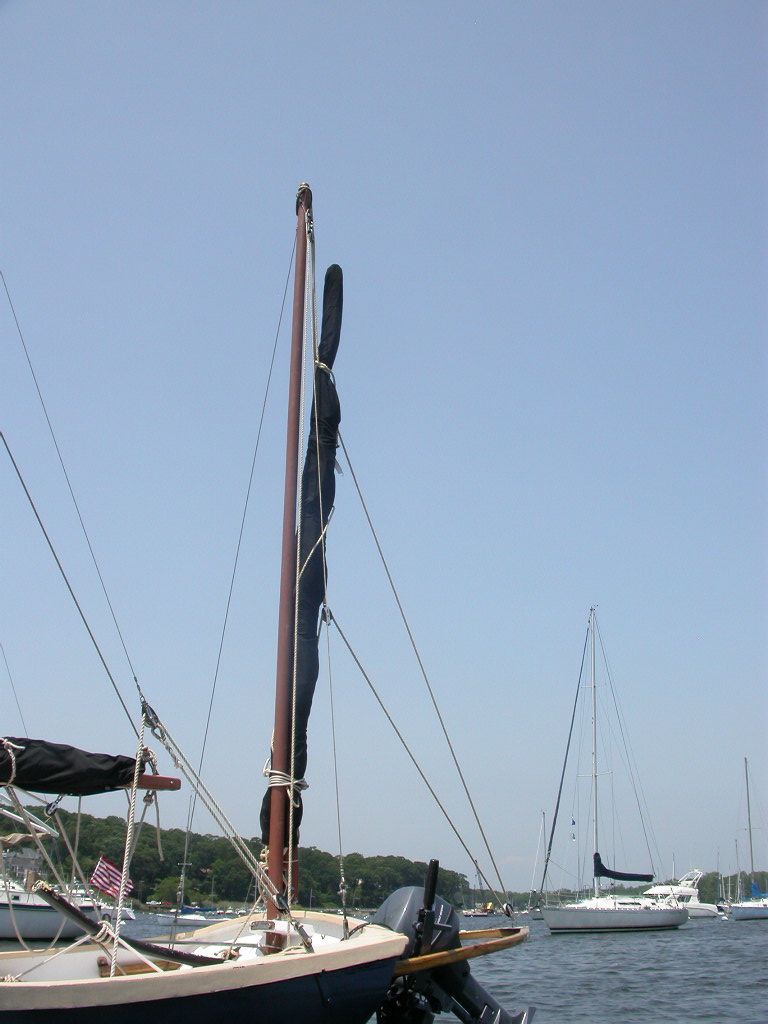 |
| Hoisted up mast for storage |
Nothing complicated about the sheet... except for how to attach the 2 blocks to the boom. I experimented with several methods... I didn't want to use any extra hardware, wanted to be able to adjust the position easily, and didn't want them to slide around on the boom, so ended up bending them on with the Studding Sail Bend. This works for now. Once I'm sure where I want them, I may hang them with grommets tightly lashed to the boom.
 |
| Mizzen sheet rigging |
So, we have a whole lot of gear for a very simple sail. But the gear itself is very simple and home-made. The result is all that I hoped for: very strong, easy to set and strike, manageable from the cockpit.
I've already sailed with it several times to see how it works. Other than having to tighten the shrouds so they were *really* tight, it all worked beautifully. So I'm calling this big (and long!) project a success. Yay!
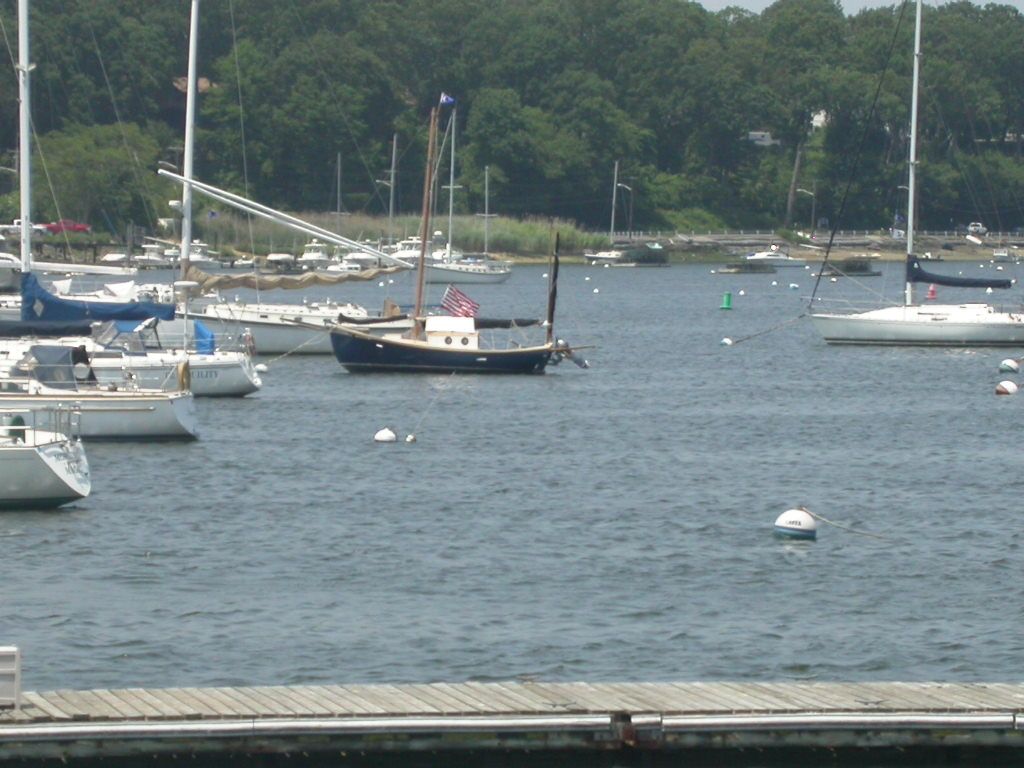 |
| Happy on mooring, with mizzen rigged |
>>> Next Episode: A Cleat for Every Line
Masthead Bibb?
ReplyDeletehttp://www.modelshipmaster.com/about/tech4--masthead.htm
http://www.retroread.com/title/The-seaman-s-friend-by-Richard-Henry-Dana-ebook.html
http://hnsa.org/doc/luce/index.htm
Stay-Chocks?
http://rosslillistonewoodenboat.blogspot.com/2011_05_01_archive.html
Gantline Bib?
http://www.pbenyon.plus.com/B_S_M/Fourth_Instruction.html
Mast 'shoulders'? Hounds
ReplyDeleteAh! This sounded right to me, but when I googled it, all I found were metal fittings for wire stays. Perhaps these were named after the original wooden hounds, I thought.
DeleteAnyway, I was motivated enough to search through Chapelle's "Boatbuilding" to see if I could find it.
Turns out, there are two correct words for them: "hounds" and "shoulders".
Mystery solved! Thanks.
BTW, the reference in "Boatbuilding" is on page 561, for anyone who's interested in learning more.
DeleteGood lookin' rigging, John. Great pics and explanation.
ReplyDeleteJust a question. Must the lazy jacks be of such a large dia line?
Thanks.
The lazy jacks are made from 5/16" line. I suppose you could go down to 1/4", or even 5/32" -- either one would probably be strong enough -- but I had the 5/16" on hand.
DeleteThe sheet & halyard are 3/8", not because of strength, but because anything smaller is tough on the hands if you need to haul on it.
I'm gradually changing all the lines over to Hempex. It's not perfect, but it's the best traditional-looking, modern rope I've found.
Thanks. good info.
DeleteThanks. I know a lot of this stuff is a bit obscure, but hopefully useful to some people.
Delete